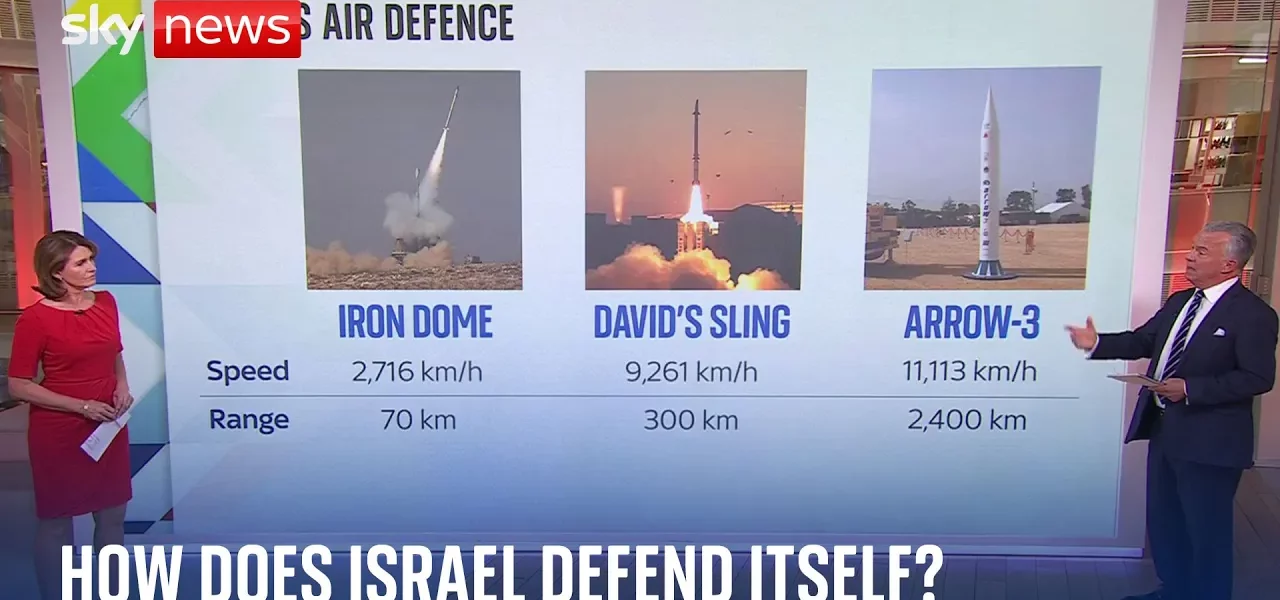Understanding the Role of Israel’s Iron Dome in Recent Middle East Conflicts

This article explores the recent escalation in the Middle East, highlighting Israel’s Iron Dome defense system and its implications on regional security and geopolitical dynamics.
Introduction
The Middle East has long been a hotspot for conflict, with recent events intensifying the situation significantly. This week’s escalation, marked by Iran’s launch of 180 ballistic missiles, has prompted discussions surrounding Israel’s defense capabilities, particularly its Iron Dome system. Understanding how this defense mechanism operates, alongside other systems like David’s Sling and the Arrow, is crucial in comprehending the current military landscape and the potential consequences for regional stability.
The Iron Dome: Overview and Functionality
The Iron Dome is Israel’s advanced missile defense system designed to intercept and destroy short-range threats, such as rockets and artillery shells. Here’s a detailed look at its functioning:
How the Iron Dome Works
- Detection: The system uses radar technology to detect incoming projectiles.
- Assessment: The radar system determines whether the projectile will hit populated areas or critical infrastructure.
- Interception: If the threat is deemed imminent, the Iron Dome launches a missile to intercept and neutralize it.
Performance Against Various Threats
While the Iron Dome is effective against rockets fired from groups like Hamas, it is part of a layered air defense network that includes:
- David’s Sling: Designed for medium-range threats, particularly cruise missiles.
- Arrow System: A long-range missile defense system capable of intercepting ballistic missiles.
Recent Escalation and the Role of the Iron Dome
This week’s conflict saw Iran launching a significant number of ballistic missiles targeting Israel. Analyzing this event reveals several critical points:
The Scale of the Missile Attack
With Iran firing 180 missiles, the scale of this attack was unprecedented. Israel’s response and the effectiveness of its defense systems were put to the test:
- Israel claims that very few missiles penetrated its defenses.
- Contrasting reports suggest a larger number of successful strikes occurred.
Military Responses and Limitations
Israeli forces, including the Iron Dome, were engaged in a multi-faceted defensive operation:
- Utilization of the Iron Dome against short-range threats.
- Deployment of David’s Sling to counteract cruise missiles.
- Arrow system was necessary for high-altitude ballistic missiles.
However, fighter jets were notably ineffective against the ballistic missile threat, highlighting limitations in aerial defense against such advanced weaponry.
Geopolitical Implications
The recent missile launches by Iran have broader implications for the geopolitical landscape in the Middle East and beyond:
Israel’s Strategic Position
Israeli Prime Minister Netanyahu’s government is poised to respond decisively. The military actions taken can be viewed as:
- A reaffirmation of military dominance in the region.
- A potential justification for preemptive strikes on Iranian nuclear facilities.
U.S. Involvement and Regional Dynamics
The United States has been clear about its stance, expressing reluctance to support aggressive actions against Iran. However, considerations are complicated by:
- The upcoming U.S. elections influencing foreign policy decisions.
- The need to balance support for Israel with international diplomatic relations.
Global Context: The Intersection of Conflicts
Interestingly, the events in the Middle East are interconnected with other global conflicts, particularly in Ukraine:
Military Resources and Supply Chains
The U.S. inventory of military resources, such as the Patriot missile systems, is under scrutiny as demands rise from both Israel and Ukraine:
- Limited supplies may lead to prioritization of Israel’s needs.
- Potential implications for Ukraine’s defense capabilities amid ongoing conflict with Russia.
Iran’s Support for Russia
Iran’s provision of ballistic missiles to Russia for use against Ukraine raises concerns about:
- The impact of Iranian missile capabilities on global military dynamics.
- The implications for Israel as it faces a dual threat from both Iranian and Russian arsenals.
Conclusion
The recent escalation in the Middle East, underscored by Iran’s missile launches and Israel’s reliance on the Iron Dome, exemplifies the complex web of military and geopolitical interactions in the region. As Israel braces for potential retaliation and the global community watches closely, the implications for future conflicts are significant. Understanding these dynamics is essential for grasping the ongoing challenges and the potential for a broader confrontation. We encourage readers to stay informed about developments in this critical region and consider the broader impacts on global security.
“`




